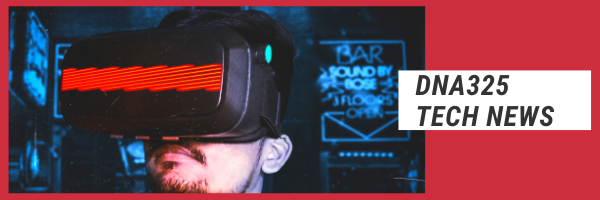Today, some online media declare the boom of artificial intelligence technologies. Many believe AI to be the artificial mind that “thinks” as a person and can pose a threat to humanity.
Is it really so? Let us try to understand the underlying terms and what kind of “intelligent” cat is in the bag.
Currently the “artificial intelligence” is understood as a specific group of technologies that are honed to certain purposes. Such technologies are also often called cognitive. Their introduction provokes significant changes in the processes in many branches of business and everyday life.
AI technologies are inextricably linked with data science – a set of methods and tools designed to search, select, organize and analyze huge amounts of information. Of these, the most often used in creating artificial intelligence elements are data mining methods, also called methods of deep or intellectual information analysis.
Definitions of “Data Mining” and “Machine Learning” Terms
Data Mining. Data Mining refers to the drawing of information from databases that are characterized by enormous size, lack of structure and single format. Complex expert systems such as banking software that conduct millions of transactions daily and practice a traditional analytical approach to the extraction of the data are prone to receiving the false results. At the same time, the process of managing them takes a lot of time, due to the constantly increasing volumes of information. In turn, the basic concept of data mining implies a truly in-depth analysis, which involves the large computing power of the data center level hardware. Previously, this parameter was the main limiting factor in the development of data mining, but today, in the era of multi-core processors, virtualization and cloud technologies, this ceased to be a big problem.
 Machine Learning. Machine Learning is one of the main concepts of artificial intelligence development. Based on the self-learning algorithms, as well as the usage of expert knowledge formalized in the software environment, machine learning fully automates the search for the most efficient task solutions. This concept is often used in the development of predictive software. In particular, to create programs that are able to detect hitherto unknown vulnerabilities and attack vectors.
Machine Learning. Machine Learning is one of the main concepts of artificial intelligence development. Based on the self-learning algorithms, as well as the usage of expert knowledge formalized in the software environment, machine learning fully automates the search for the most efficient task solutions. This concept is often used in the development of predictive software. In particular, to create programs that are able to detect hitherto unknown vulnerabilities and attack vectors.
How is Machine Learning Used?
Have you ever wondered how the online retail shops provide nearly instantaneous reactions to your queries? Or how the financial institutions give rapid responses to loan requests? Many of our day-to-day activities are powered by machine learning algorithms, including:
– Fraud detection;
– Web search;
– Real-time context-sensitive ads at web pages and mobile devices;
– Text-based sentiment analysis;
– Loan scoring and next-best offers;
– Predictive analytics;
– Hardware faults forecasting;
– Pricing models adaptation;
– Network intrusion detection;
– Pattern and image recognition;
– Spam filtering;
– Natural language processing;
– And many, many others.
The implied software model is based on constant analysis of collected data, searching trends and adapting. After a certain period, such a system becomes able to distinguish the normal state of data flows and isolate the anomalies in their structure. The detected inconsistencies are thoroughly investigated by business analysts with an intention of securing vulnerabilities, discovering new trends and taking advantage of opportunities in most efficient ways.
Moreover, software created on the basis of data mining and machine learning allows carrying out a multi-criteria study of transactions that are an integral part of business processes. The data obtained is subsequently used for further learning. Not to mention that machine learning is often used by commercial and government organizations for biometric authentication.
Data Science Companies in Ukraine
In last years Ukraine became renown for its outsourcing software engineers. High quality and wide knowledge of ukrainian programmers are combined with reasonable prices. Let us review the most notable Ukrainian companies that offer data mining and machine learning development services.
- YouScan. YouScan’s data mining platform helps world class brands such as Nestle, Coca-Cola, and McDonalds to discover mentions of their products in social networks and online media, find valuable insights and trends, respond to user concerns and analyze the perception of products and services by consumers.
- Scorto. Scorto’s specialists and scientists create high-quality individual solutions for data mining, risk assessment in consumer lending and decision management systems for financial institutions of different scale.
- Datawiz. Datawiz is a vendor of a renown business intelligence and data analytics service that provides a unique opportunity to create customized dashboards and visualizations for all business processes of the client companies.
- V.I.Tech. Small Kyiv-based company is proficient in the creation of custom cloud-based analytical processing and business intelligence automation solutions.
- DataRobot. DataRobot supplies the enterprise class platform for business analytics automation based on the predictive forecasting and open source machine learning algorithms. The product is supplied along with extensive data science education courses for customers.
- TenViz. A subsidiary of LyddFootwear LLC supplies a range of data-driven solutions for predictive analytics, asset management, banking, and retail networks, based on traditional math models and machine learning.
- QuantumMobile. Quantum is a technological company which transforms big data and data science models into IT solutions. Company expertise ranges from data mining and computer vision to AI integration and big data analysis.
- CHI Software Brings up internal and commercial projects in AI and Machine Learning, IoT, DevOps and Full Staсk engineering.
Final Thoughts
Data mining and machine learning are extremely powerful mechanisms for corporate automation and decision management. In the hands of skilled programmers, they turn into truly advanced algorithms for information analysis, anomalies search and application of appropriate business measures.


